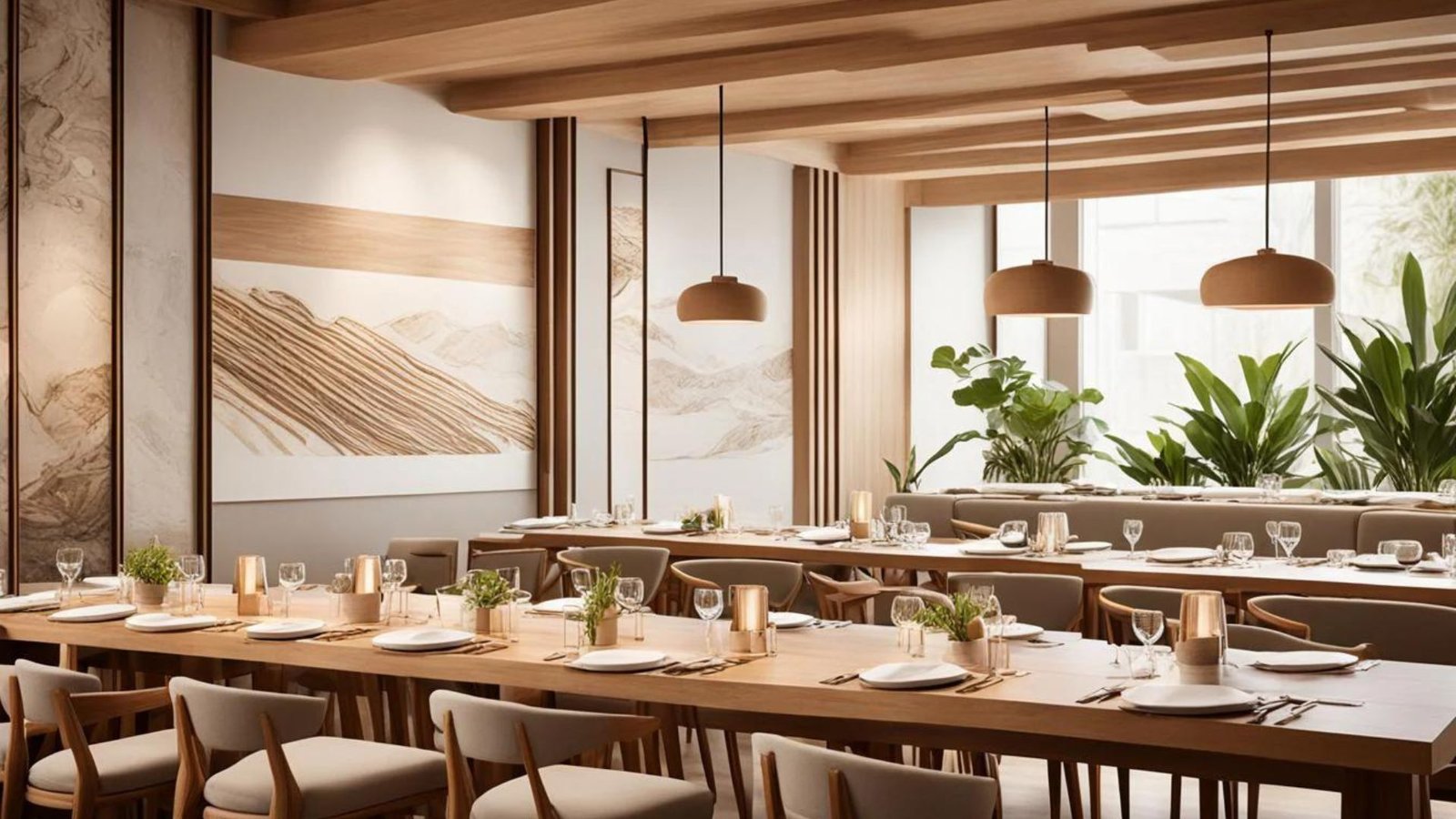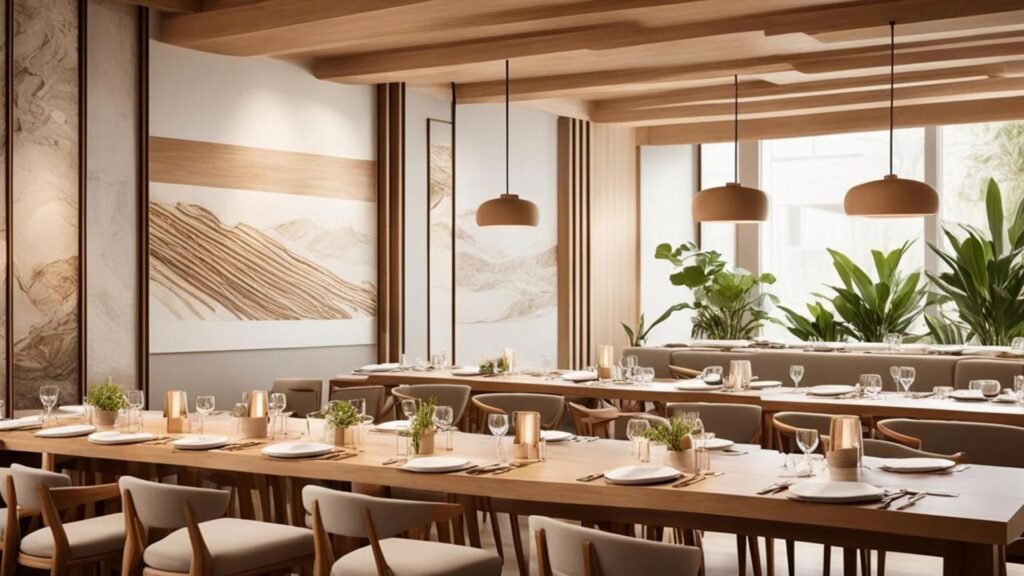The Role of Japanese Aesthetics in Restaurant Design

Japanese aesthetics play a significant role in the design of restaurants, both in Japan and around the world. Rooted in concepts of simplicity, harmony, and a deep connection to nature, these principles create an environment that is not only visually pleasing but also deeply reflective of Japanese culture. Here’s a look at how Japanese aesthetics influence restaurant design and why these elements are so impactful.

Simplicity and Minimalism
At the heart of Japanese aesthetics is the principle of “wabi-sabi,” which finds beauty in simplicity and imperfection. This philosophy is reflected in restaurant design through minimalistic interiors that focus on clean lines, uncluttered spaces, and the use of natural materials. By stripping away excess and focusing on the essentials, Japanese restaurant design creates a calming and serene environment where the focus can be on the food and the dining experience.
The Use of Natural Materials
Japanese design often incorporates natural materials such as wood, stone, and paper. These elements bring a sense of warmth and connection to nature, which is central to the Japanese aesthetic. Wooden beams, bamboo accents, and tatami mats are common features in Japanese restaurants, providing a tactile and visual link to the natural world. The use of natural light, often filtered through shoji screens (paper sliding doors), further enhances this connection by creating a soft, diffused glow that complements the interior.
Harmony with Nature
Japanese aesthetics emphasize “shizen,” or naturalness, which is the idea of creating spaces that are in harmony with nature. In restaurant design, this can be seen in the integration of indoor and outdoor spaces, such as the use of open courtyards, zen gardens, or water features like koi ponds. These elements not only enhance the dining experience but also provide a sense of peace and tranquility that is deeply rooted in Japanese culture.
The Importance of Space
Space, or “ma,” is a crucial concept in Japanese aesthetics. It refers to the intentional use of empty space to create a sense of balance and flow. In restaurant design, ma is achieved by careful placement of furniture and decor, ensuring that each element has room to breathe. This thoughtful use of space encourages a relaxed and meditative atmosphere, allowing diners to fully immerse themselves in the experience.
Attention to Detail
Japanese aesthetics are characterized by meticulous attention to detail, where every element, no matter how small, is carefully considered. In restaurant design, this is reflected in the use of handcrafted furniture, intricate ceramics, and artful presentation of food. The placement of a single flower, the texture of a ceramic bowl, or the arrangement of chopsticks can all contribute to the overall aesthetic, enhancing the sense of mindfulness and respect for craftsmanship.
Integration of Cultural Elements
Japanese restaurant design often incorporates cultural elements that reflect the country’s rich heritage. This might include traditional art forms such as calligraphy, ikebana (flower arranging), or hanging scrolls with seasonal motifs. The inclusion of these elements not only adds to the visual appeal but also provides diners with a deeper connection to Japanese culture and traditions.
Creating a Sense of Privacy
In Japan, dining is often seen as a private and intimate experience. To accommodate this, many Japanese restaurants are designed with individual rooms or semi-private booths that offer a sense of seclusion. The use of sliding doors, screens, or curtains helps to create these private spaces without compromising the overall aesthetic, allowing diners to enjoy their meal in a peaceful and undisturbed setting.
Conclusion
Japanese aesthetics play a pivotal role in restaurant design, creating spaces that are not only visually appealing but also deeply reflective of Japanese cultural values. Through principles of simplicity, harmony with nature, attention to detail, and the careful use of space, Japanese restaurant design offers a dining experience that is both serene and immersive. Whether in Japan or abroad, these design elements continue to inspire and influence the way we think about and experience dining.



